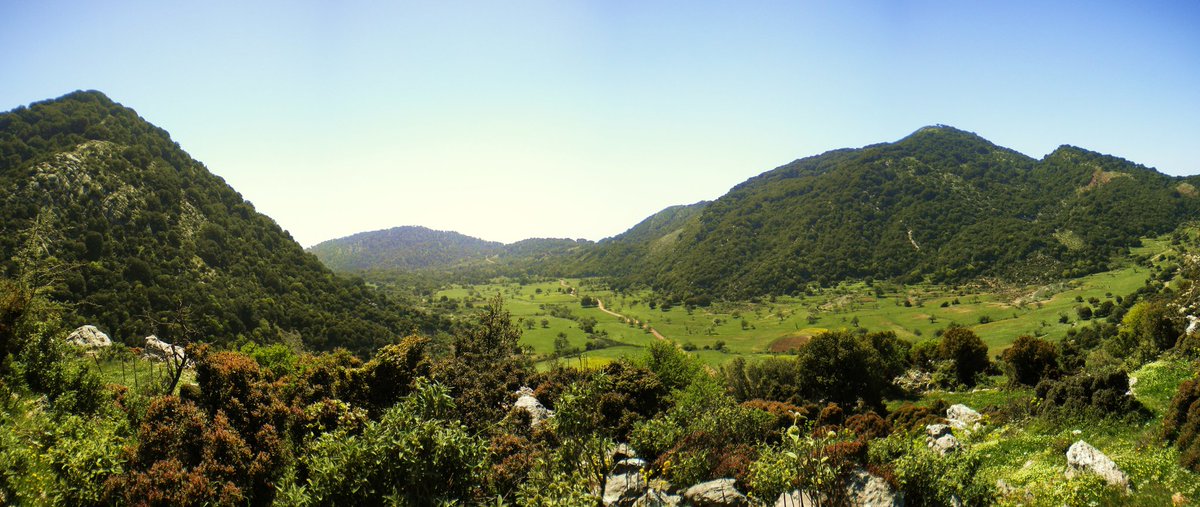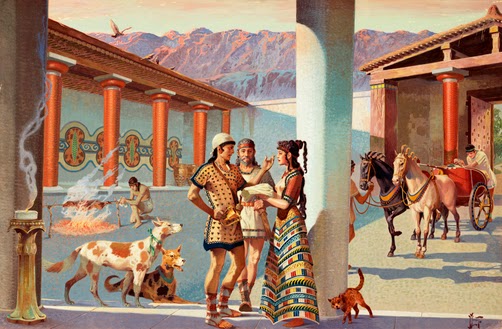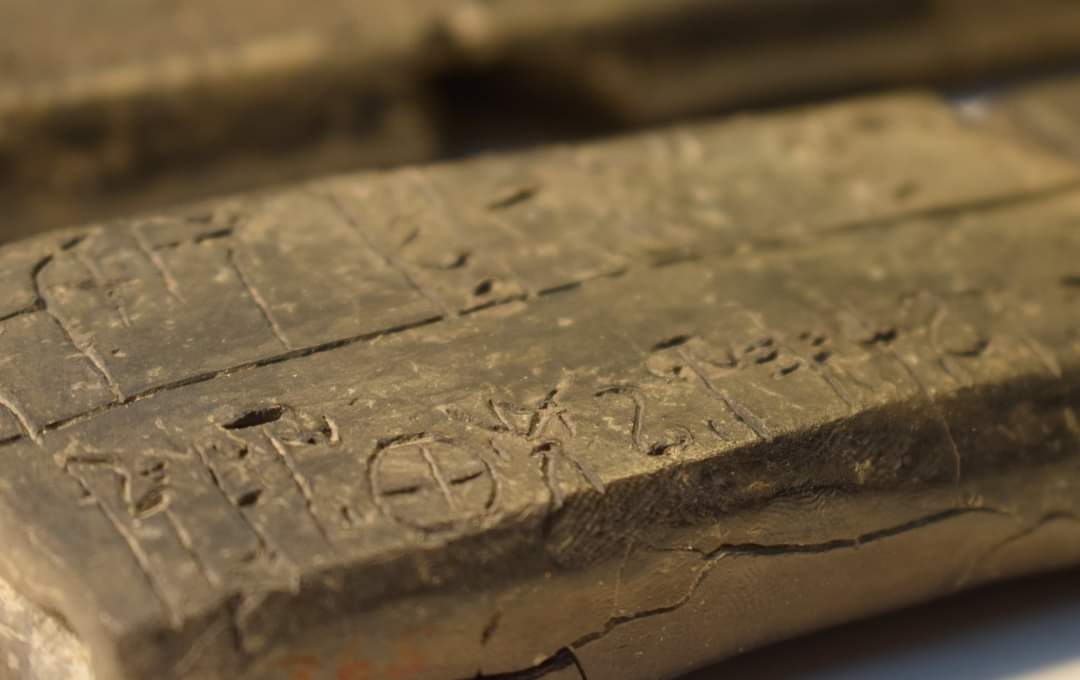1/ When in 1939 Carl Blegen began his excavation activity in the Mycenaean palace of Ano Egklianos, he did not imagine that at the entrance of the central palace complex, next to the outer propyla, he would discover the largest and best preserved archive of Linear B' script. 

2/ The clay tablets were preserved due to the violent fire that destroyed the palace complex at the beginning of the 12th century BC (1190-1180 BC) and which probably came from human energy. Several of the tablets bear visible signs of the raging fire. 

3/ The Pylian tablets archive, although it is a corpus of mainly accounting texts, presents us with the image of Mycenaean Messinia according to the eyes of the Pylian bureaucracy and in fact in the last period just before the destruction. 

4/ First of all, the geographical area controlled by the Mycenaean palace of Pylos is determined, which stretched from the river Neda in the north to the river Nedon in the southeast (two similar names), covering the area of ancient Messinia. 

5/The palatial territory of Pylos was divided into two provinces: in Nearer of Land (de-we-ro-a3-ko-ra-i-ja = deūron Aigon-las [khora] < Προς τα εδώ του βράχου των αιγών χώρα) and in Further of Land (pe-ra3-ko-ra-i-ja = pera Aigon-las [khora] < Πέρα του βράχου των αιγών χώρα). ➡️ 

➡️ As indicated the geographical barrier that separates the two provinces was the Rock of the Goats, i.e. the Aegaleon mountain range of classical times. 

6/ Ruler of the kingdom of Pylos seems to have been the most powerful personality mentioned in the texts with the name E-ke-ra2-wo < Enkhellawōn < the joyous with the spear, who refers to be involved in the embarking of 40 oarsmen and to be the owner of large tracts of land. 

7/ Nevertheless, the Mycenaean wanax (ruler) of Pylos seems to have had a palatial court poor in size and wealth, while the only royal act (the appointment of an administrative official) may indicate his recent rise to power. 

8/ A special text lists a long catalogue of agricultural products and animals, which are sent by the head of a craft industry to the sacred site of Sphagiana on the occasion of the muiomenoi epi wanaktei < of the initiation of the wanax, which specify a symposium of 2000 people. 

9/ The second most important person of the kingdom of Pylos was the powerful ra-wa-ke-ta < lawagetās < λαFηγέτης = the head of the armed people, who is identified with the landowner Wedaneus. ➡️ 

➡️ Although it has been emphasized that the lawagetās has a role as commander of the military forces of Pylos, there is no mention on the tablets to indicate his involvement in military affairs. 

10/ At the same time, a series of administrative or non-administrative terms are mentioned that imprint the members of the palace aristocracy and the priesthood, the bureaucrats, those employed in the crafts, the lands and livestock, the common people and the slaves. 

11/ Due to the strongly accounting nature of the Pylian archive we are provided with information on landed property, economic activity, aspects of religious life, the military equipment used by Achaean warriors and their recruitment. 

12/Above all,they are presenting us with two elements that perhaps testify that the kingdom of Pylos, shortly before the collapse of the local Mycenaean palatial administration and the destruction of the palace, was in an crucial situation: internal turmoil and an external threat 

13/ The corpus Ma of the Pylian archive includes 18 Linear B' tablets, which demonstrates that the central administration proceeds to the collective payment of taxes in kind by a group of communities of the Pylian territory. 

14/ These tax documents do not simply indicate to the communities the products and the quantity that they have to deliver as tax, but they make a detailed record of what was finally paid, since they explicitly state what they were obliged to pay. 

15/ Of particular importance is the fact that the word όφελος is mentioned with the meaning not of the tax exemption, but of the debt, while a tablet mentions that a community has a debt of last year (περυσινό). ➡️ 



➡️ Another tablet mentions that a group of coppersmiths ου δίδωνσι, ie did not want to pay their due tax. 

16/ All the above argue that something was wrong with the productive and tax process in the Pylian territory in the last years before the destruction of the central palace and there is evidence of productive poverty and disobedience emerge. 

17/ The above testifies to either a collapse of economic production, a consequence of the degradation of the agricultural lands and the pastures due to overexploitation ➡️ 

➡️ in relation to the disorganization of international trade, or a strong reaction of the local population towards an increasingly oppressive palatial bureaucracy, or both together. 

18/ However, the palatial administration of Pylos seems to be preoccupied not only with internal problems, but also to face a threat on its western coastline, as a series of documents entitled "Thus the watchers are guarding the coast” demonstrates. 

19/ They include the enumeration of various units under the term o-ka < orkhai < Homeric term όρχος, which are commanded by the orchámos. Their base of operations is mentioned, while their forces vary, but are always multiples of 10, the basic number of Mycenaean working groups. 

20/ The name of the head of each unit, the head of each group of ten soldiers, a number of details about the forces and their starting point are noted. ➡️ 

➡️ The placement of the deployment toponyms of the specific forces indicates the focus of the Pylian administration on the defense of the most vulnerable areas of the kingdom and especially the access to the palace. 

21/ The coastal forces must have been supported by larger military units located inland. Although it appears to have been an effective defensive device, it did not work as expected, ➡️ 

➡️ although it held off the attack long enough to give the occupants of the palace an opportunity to abandon it taking with them all their valuables, and the people to flee to the neighboring Arcadia. 

22/ Who were the attackers in Pylos? My opinion is that these are pirate groups coming from the Italian peninsula, who leveled an already shaken and weakened Mycenaean Messinia. The destruction of Pylos was inevitable! 

• • •
Missing some Tweet in this thread? You can try to
force a refresh
























